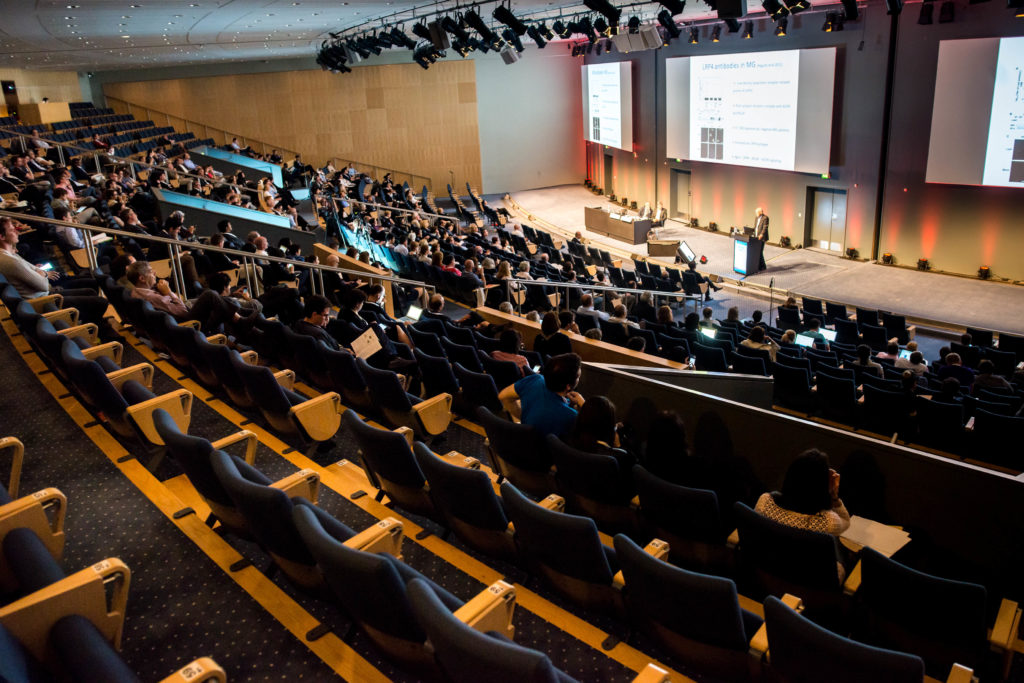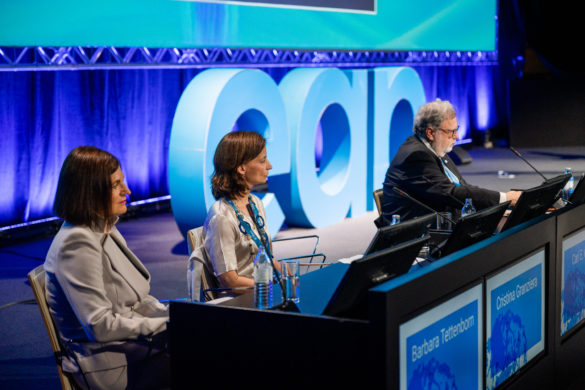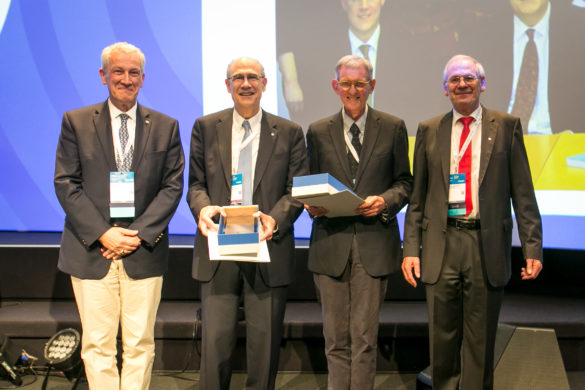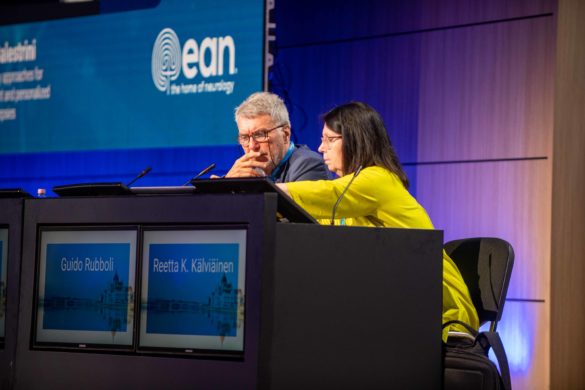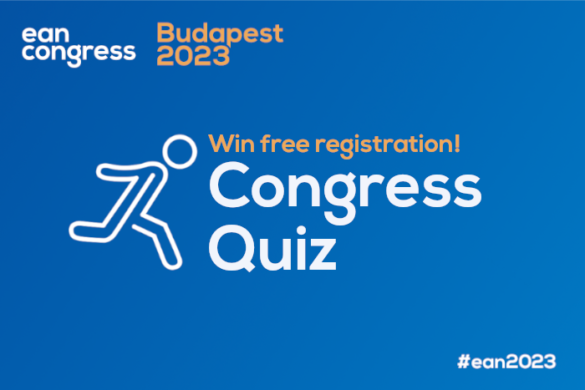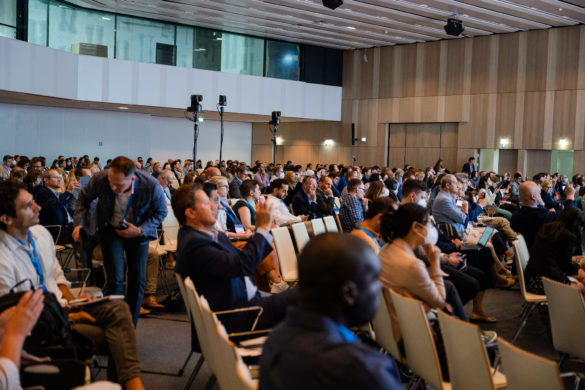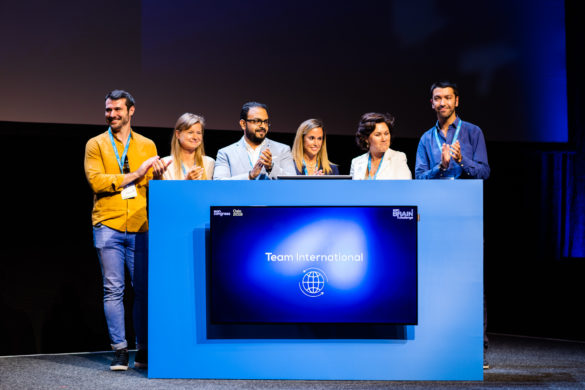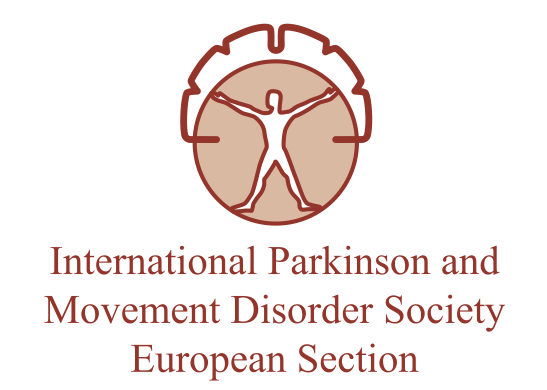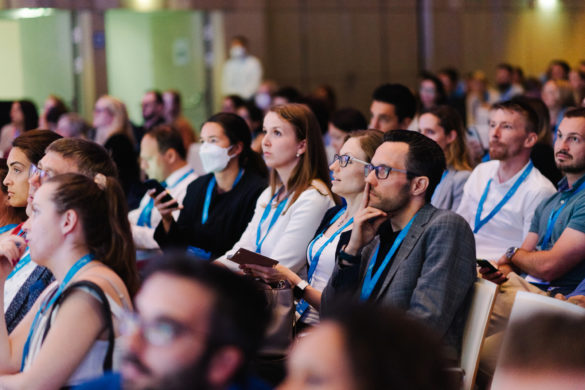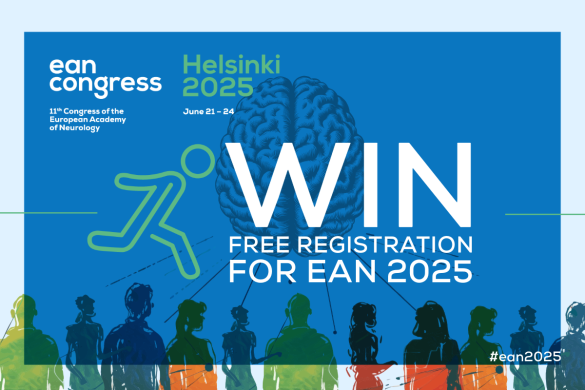New perspectives in the treatment of neuromuscular diseases: therapies on the horizon
Hall B, Mon, 2016-05-30 14.45-16.45
Chairpersons
Eduardo Nobile-Orazio, Milan, ITALY
John Vissing, Copenhagen, DENMARK
• Amyotrophic lateral sclerosis: still far from an effective therapy?
Vincenzo Silani, Milano, ITALY
• Myasthenia gravis: new therapies for new antibodies?
Nils-Erik Gilhus, city, Norway
• Immune mediated neuropathies: monoclonal antibodies and what else?
Eduardo Nobile-Orazio, Milan, ITALY
• Genetic treatment in muscular dystrophies: hope or reality?
Francesco Muntoni, city, Country
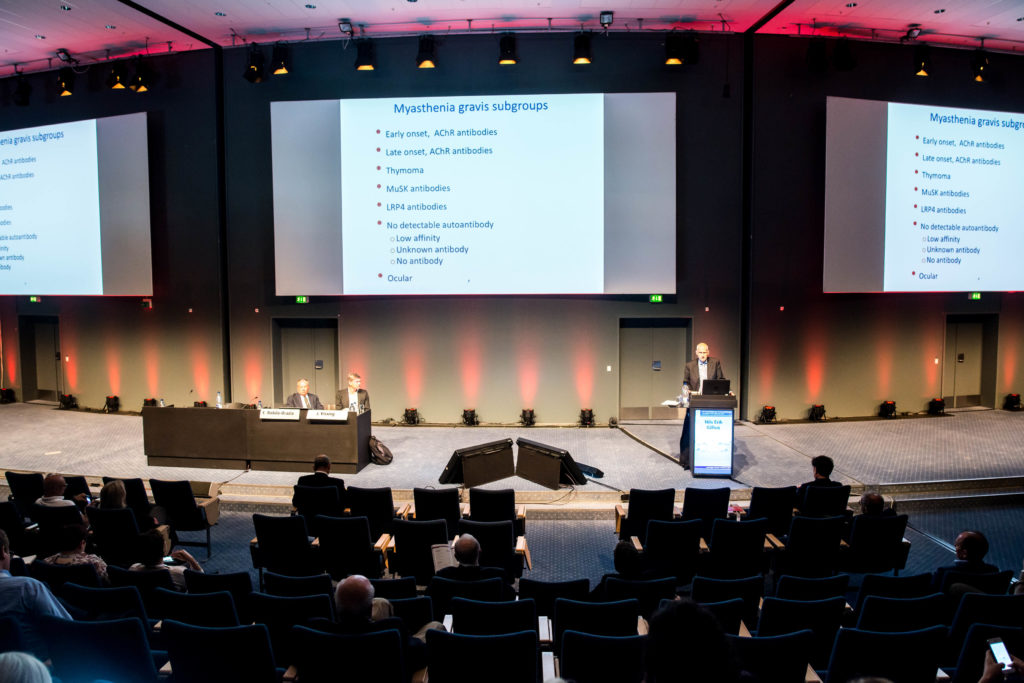
Prof. Silani, from Italy, presented a talk titled “Amyotrophic lateral sclerosis: still far from an effective therapy”, discussing what is behind the idea that Riluzole is the only licensed treatment since 1995. He mentioned the 23 trials and 18 drugs that failed in ALS. However, in 2006, the concept of a disease due to motoneuron selective vulnerability in SOD1 era, moved to the concept of a systemic disorder. TDP-43 was discovered and new genes continuously were discovered. These genes are related to autophagy, a difficult target. ALS Airlie House clinical trial guidelines 2016 have provided new approaches, among them stem cells remain intriguing, next to retigabine, or acting on SOD1 and C9orf.
Prof. Gilhus, from Norway, discussed “Myasthenia gravis: new therapies for new antibodies”. He suggested that MG should be actively treated with immunosuppression to improve prognosis. A clue remains dividing MG to decide treatments: early onset with anti AchR antibodies, late onset with antibodies, thymoma, MuSK antibodies, LRP4, no detectable antibodies, and ocular MG. He suggested considering antibodies as specific and sensitive tools that could be use for diagnosis. Treatments acts on several pathogenic phases. Most of the patients may require immunosuppresion for a long time to prevent exacerbations, while other may require thymectomy.
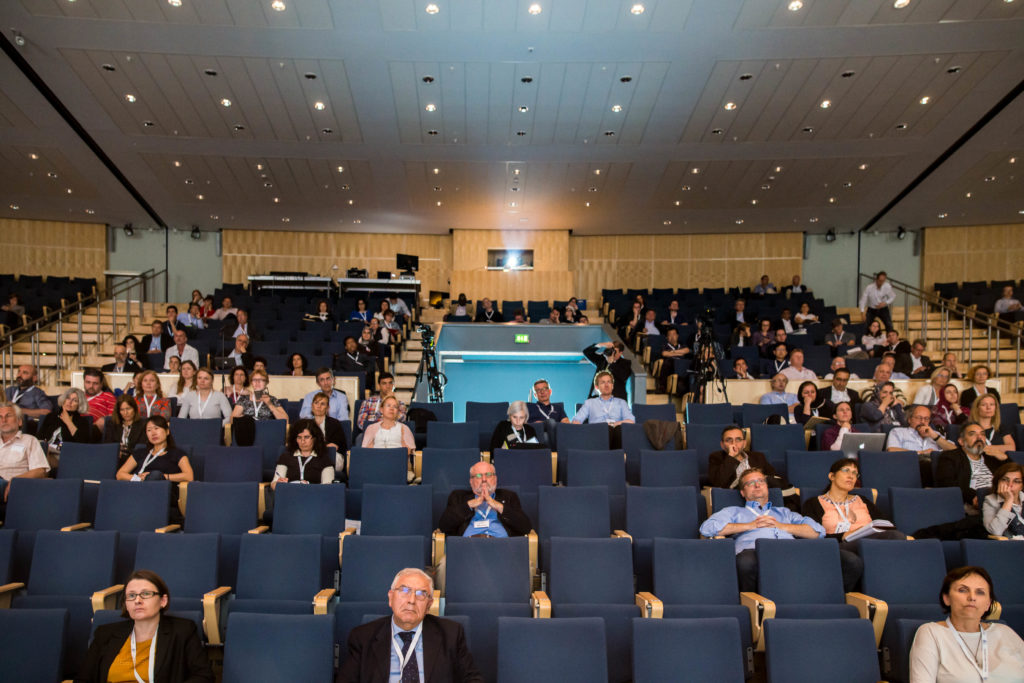
Prof. Nobile-Orazio, from Italy, presented a talk titled “Immune mediated neuropathies: monoclonal antibodies and what else?”. He first remembered about giving a proper diagnosis of these rare conditions and their variants focusing on chronic inflammatory demyelinating polyradiculopathy (CIDP, 2010 revised criteria by EFNS/PNS). Then he confirmed that three therapuetical interventions are effective: steroids, plasma exchange, IVIg. He discussed also about the necessity of immunosuppresants in 20-30% of patients. Again, need for subgroups maybe defining specific antibodies was remarked.
Prof. Muntoni, from UK, gave a talk on “Genetic treatment in muscular dystrophies: hope or reality?”. He stated DMD has to be understood for planning the intervention of the 26.000 cases occurring each year and to limit the progression of the disease. He gave an overview of some trials on antisense oligonucleotides in gene therapy. Some results of studies have not been conclusive, mostly because of inclusion of heterogenous patient population. Further data are going to emerge such as changing disease progression due to target genetic therapeutic interventions. (#ean2016)
Domizia Vecchio, Italy
